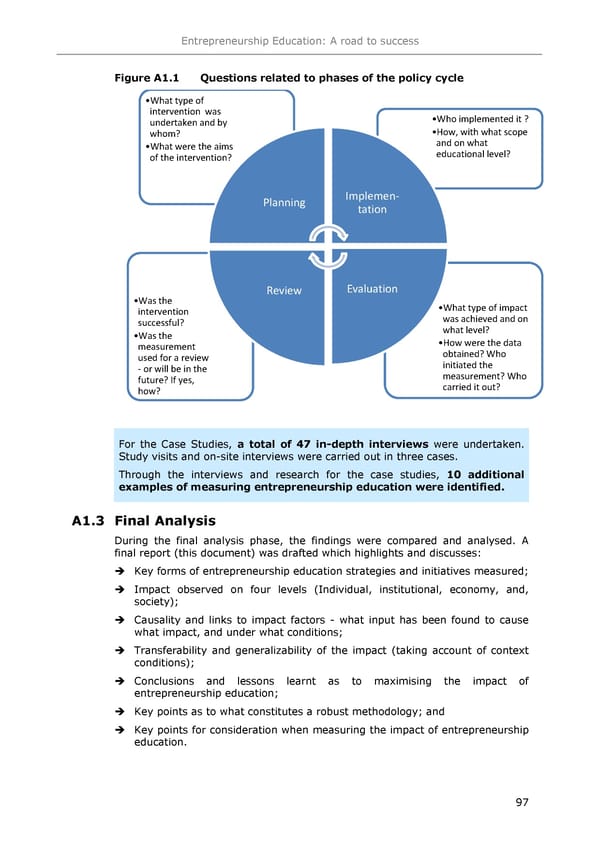Entrepreneurship Education: A road to success Figure A1.1 Questions related to phases of the policy cycle •What type of intervention was •Who implemented it ? undertaken and by •How, with what scope whom? and on what •What were the aims educational level? of the intervention? Planning Implemen- tation Review Evaluation •Was the •What type of impact intervention was achieved and on successful? what level? •Was the •How were the data measurement obtained? Who used for a review initiated the - or will be in the measurement? Who future? If yes, carried it out? how? For the Case Studies, a total of 47 in-depth interviews were undertaken. Study visits and on-site interviews were carried out in three cases. Through the interviews and research for the case studies, 10 additional examples of measuring entrepreneurship education were identified. A1.3 Final Analysis During the final analysis phase, the findings were compared and analysed. A final report (this document) was drafted which highlights and discusses: Key forms of entrepreneurship education strategies and initiatives measured; Impact observed on four levels (Individual, institutional, economy, and, society); Causality and links to impact factors - what input has been found to cause what impact, and under what conditions; Transferability and generalizability of the impact (taking account of context conditions); Conclusions and lessons learnt as to maximising the impact of entrepreneurship education; Key points as to what constitutes a robust methodology; and Key points for consideration when measuring the impact of entrepreneurship education. 97
 Entrepreneurship Education Page 100 Page 102
Entrepreneurship Education Page 100 Page 102